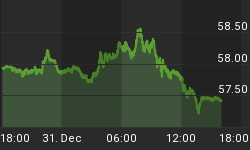Summary
On November 14th, I wrote and posted on the Gillespie Research Associates Website a missive entitled, "Bye-Bye, M3, but Why?" In cursory fashion, the piece examined the Federal Reserve's announcement of November 10th that the Fed would cease publishing M3 and some of its more critical components as of March 23, 2006. Those reading the article know it conveyed a rather cynical tone.
My colleague, John Williams, has just authored a more detailed examination of the event; it carries a publication date of today. The article is highly insightful as well as provocative, and because of the importance of the topic, John has been kind enough to let me share it with a broad audience. An excerpt:
"Unilaterally and without reasonable explanation, the Federal Reserve Board has decided to stop reporting monetary aggregate M3, the broadest of the money-supply measures and probably the most important statistic published by the U.S. central bank. Of the liquidity measures, inflation-adjusted M3 is the best leading indicator of economic activity. Despite its strong growth in nominal terms, net of inflation (calculated on a pre-Clinton Era basis), M3 generated a reliable recession signal several months back.
"What game the Federal Reserve is playing will become clear soon enough. However, the chances that M3 is being eliminated because it merely duplicates M2 are nil. The cost factor the Fed cited in its announcement also is a canard."
Access this intriguing article at: http://www.gillespieresearch.com/cgi-bin/bgn/article/id=712
















